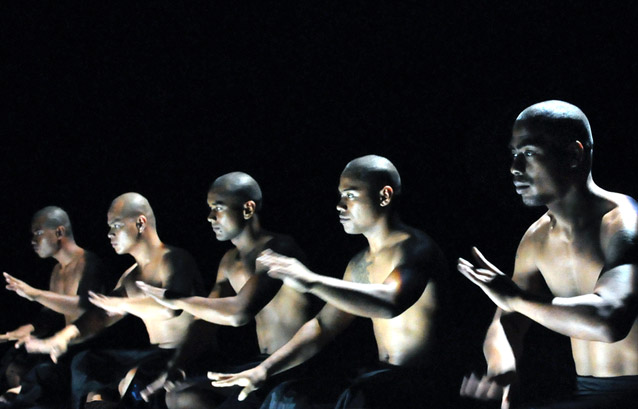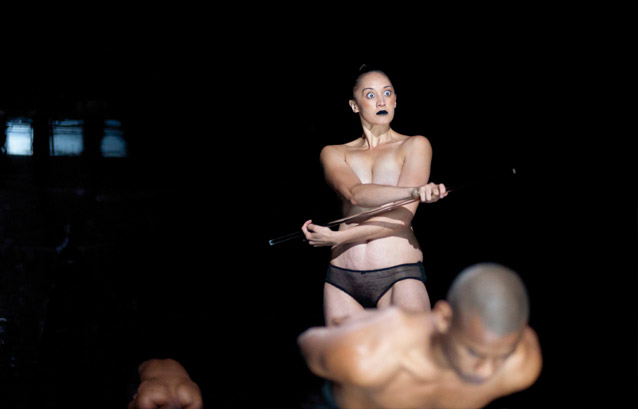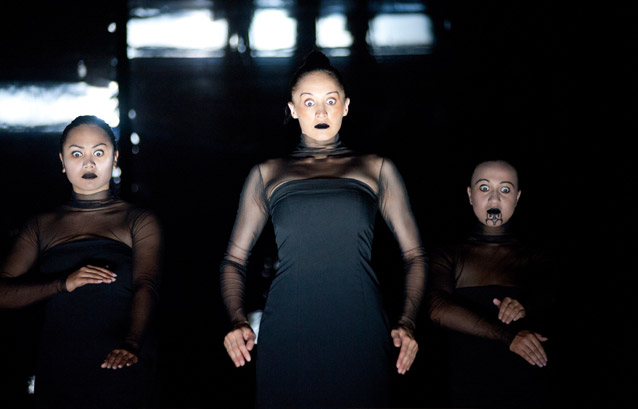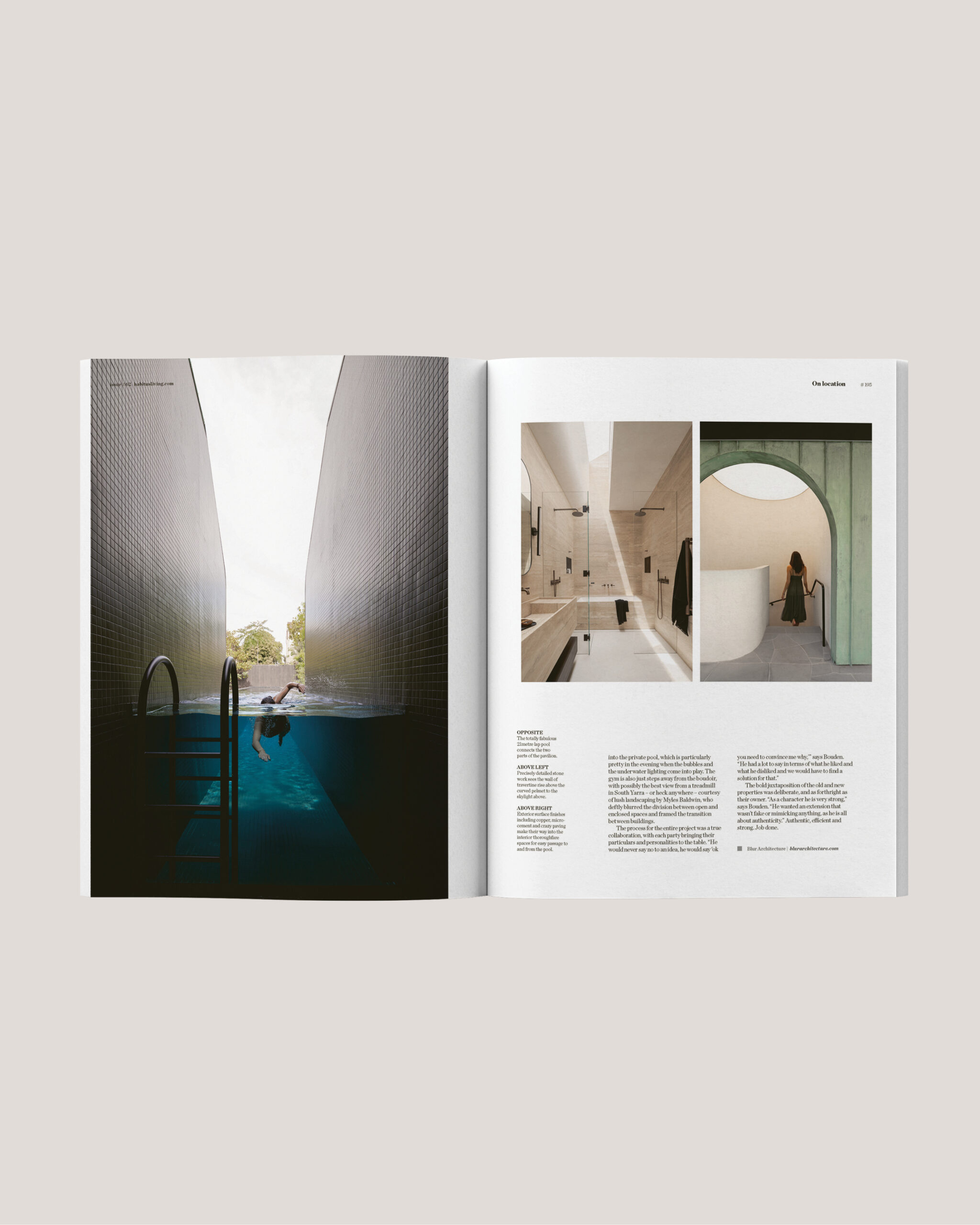With a bold and ground-breaking stage vocabulary, Birds with Skymirrors is a dance reflection on the human relationship with the planet at a time of momentous climate change. The title is inspired by an encounter had be Ponifasio on the Pacific Island of Torawa, where he witnessed migrating birds carrying strips of deadly black magnetic tape in their mouths, which appeared akin to liquid mirrors reflecting in the sky.
Inspired by what was at once a vision of beauty and spirit of death, Ponifasio, who holds the title of a High Chief among the intellectual and spiritual leaders of Samoa, said: “I have prepared Birds with Skymirrors not as an environmental lecture but as a karanga, a genealogical prayer, a ceremony, a poetic space; a life reflection as a member of the human species sharing Earth’s process with all sentient beings.” When asked about the political dimension of his work, Ponifasio commented that ” my aim is not to express a political point of view, I think if we create a space where people can sense their own sense of relationship with the world or their moral then its up to them to take appropriate action to live their life.”

Ponifasio goes on to explain how he composes his performance, meditating on how it is crucial to understand a space and then build a dance for it, “the work is always about space, therefore light and dark is the main design element of thinking about space.” Obviosuly, however, the human element needs to resonate within that space – “you can put all kinds of fancy lights on but if the dancer doesn’t inhabit the space it’s nothing.”

Lastly, we ask Ponifasio about what he would like his audience to take away from a performance: “I don’t think there’s anything I want them to understand”, he answers, “they’re experience is more important to me, if they have an attention or a silence, an absence of propaganda, to cut out the bullshit, that is for me the most important mission of why you go to the theatre.”
Birds with Skymirrors transcends conventional ideas of theatre and dance and traverses themes of nature and the destructive power of the human race, without ingratiating to Western aesthetics or South Pacific clichés. Evocative lighting and video projections create an austere and mystical world, as the performers convey an urgent message – radical climate change is not an apocalypse about to happen; it is already here.

This performance at Carriageworks is the Australian premiere of the work and runs 1-4 May.
Carriageworks
carriageworks.com.au

